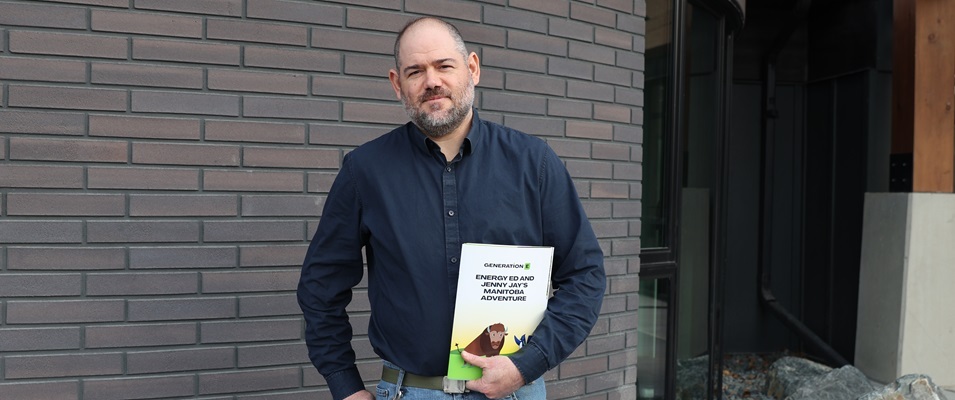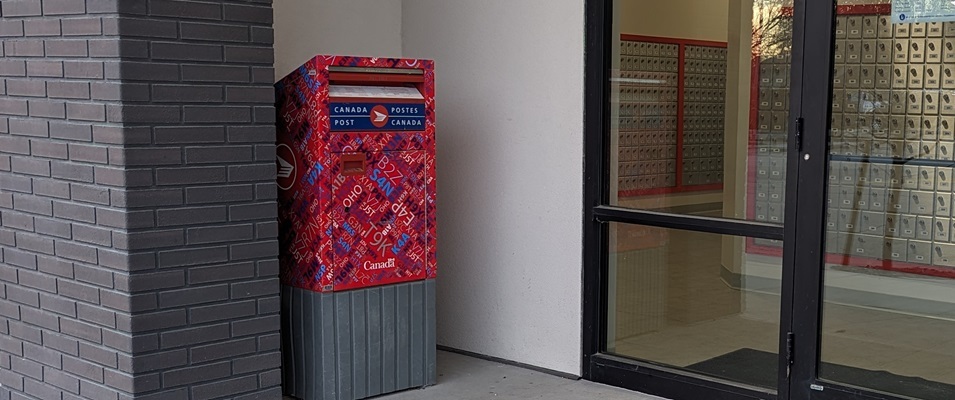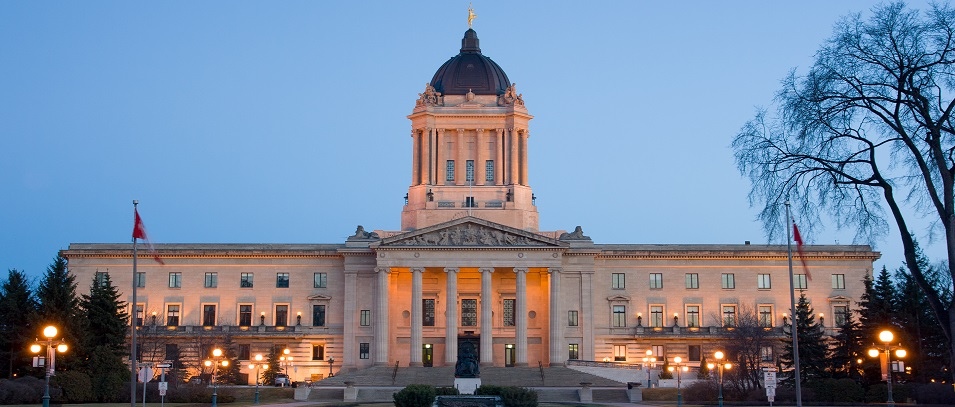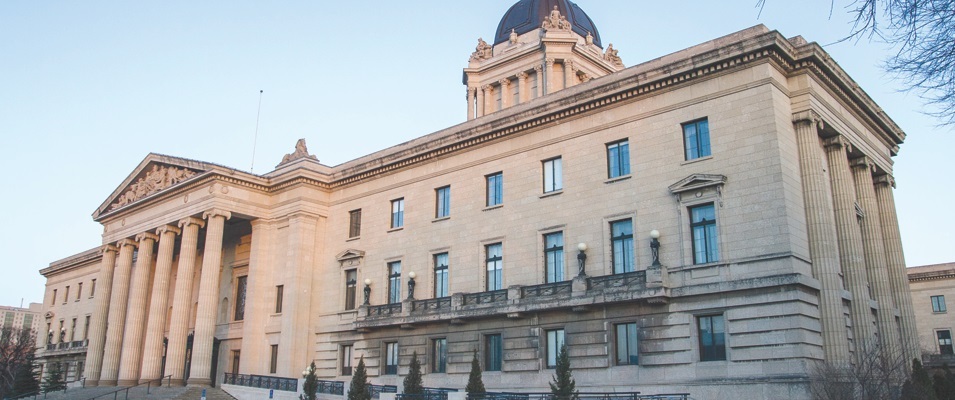Île-des-Chênes may look like a sleepy bedroom community from the outside, but from within, there are clear indications of a vibrant, thriving mini-tropolis. Tall and proud, an imposing structure stands sentinel over the village of about 1,250 (according to the 2011 census): the TransCanada Centre (TCC).
The 30,000-square-foot multiuse centre is a bold testament to the vision and cooperation a small community can muster. Inside you’ll find a massive community hall and event centre, a bilingual daycare, and plenty of space for current and future business tenants.
The TCC is one part of a grander scheme spearheaded in 2009 by Roger Perron, then-Economic Development Officer of Ritchot. Mandated to stimulate economic growth, Perron sought government-funded initiatives that would couple with the community’s existing needs. The most immediate concerns were an aging community hall too small for a growing township and an arena in desperate need of updated ice surfaces and pumps.
Through economic stimulus grants from the federal and provincial governments, as well as community donations, Perron was able to secure $4.3 million in funding. Further stimulus came through the Federation of Canadian Municipalities (FCM), an arm of the federal government which provides assistance to Canadian rural municipalities.
After submitting mountains of paperwork, an additional $1.5 million was awarded to the project by the FCM on a 20-year loan at two percent interest. Twenty percent of that loan was to be donated back to the project in the form of a grant should the project be built in an environmentally sustainable way. To Perron, the cost of such a venture was more than worthwhile in terms of the kickback provided and the pride of a project that would set a high standard for the rest of Manitoba.
In early 2010, a geothermal energy field was installed, large enough to provide combined heating and air conditioning to the arena, fire hall, proposed TCC, and an emergency medical service garage built in 2015.
“No other small community in Manitoba has a district geothermal system,” says Perron, “which means that you have three or more buildings being run off the same system.”
The system allows the heat created in the underground lines during the arena’s ice-making season to provide warmth to the TCC. It has since resulted in a 60 percent energy savings to the connected buildings.
Further to that, Perron and a team of local volunteers set out to be certified by Leadership in Energy and Environmental Design (LEED). The TCC was built in large part with materials sourced locally and using recycled content where possible. It was designed around a philosophy of water conservation, sustainable waste management, green housekeeping, and occupancy comfort with optimal air quality and plenty of natural light.
In 2012, upon its completion, the TCC received the national Sustainable Community award from the FCM.
Perron’s pursuit of financial assistance didn’t end there. For two years, he pursued the TransCanada Corporation, a natural gas pipeline company, offering them naming rights to the new building for a monetary investment. He succeeded and the pipeline company, which had established a compressor station and three main gas lines in Île-des-Chênes back during the 1950s, kicked in an additional $150,000.
Perron and other local volunteers then approached the community’s existing French and English daycares and recommended a merged bilingual daycare in the TCC. Before the government childcare grants were even in place, the TCC team equipped the 8,000-square-foot dedicated space with in-floor heat, large windows, and a sprinkler system.
Shortly after a site visit by Ron Lemieux, who served as the NDP MLA for La Verendrye, the childcare grant was approved. The daycare now has 94 government-sponsored spaces and over 100 children in their care. The daycare has applied for additional spaces for the 40 to 50 children on their waitlist.
After extensive research indicated a lack of sizeable, affordable halls in the southeast, Perron and his volunteer team created an event centre licensed for 500 people, fully equipped with all the bells and whistles—a commercial kitchen with two bars, a projection screen, state-of-the-art multimedia technology, a large overhead door to accommodate trade shows, and décor to suit any event.
“One of the things we looked at when building the hall is what is out there that will hold 500 people,” says Perron. “We looked at it and said, ‘Why be like everybody else? Let’s make ourselves huge.’ People, when they come here, are in awe [of] the hall. They don’t expect to see that when they see the building. I wanted it to look classy, not just another place.”
The event centre caters to weddings, trade shows, craft sales, and large corporate events. To ensure they don’t lose their local focus, the space is also utilized by the daycare for play space during extreme winter weather, exercise classes, senior’s functions, funerals, and socials. Discounted rates are offered when security and bartenders aren’t required. Though the facility offers catering services, renters can bring in their own food and services if preferred.
The evidence speaks for itself. One look at this multiuse facility makes it clear that a little hard work and a whole lot of community pride can turn big dreams into reality.




















